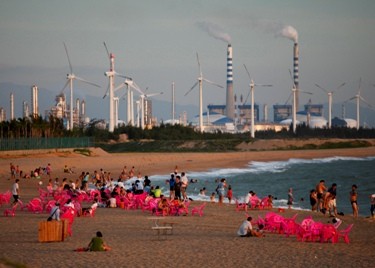Chinese capital Beijing and Hebei's city of Zhangjiakou are planning to use wind power for heating as part of their efforts to combat air pollution.
The pilot plan, slated to commence in two years' time, will be launched in northwest Beijing's Yanqing County.
Yanqing County, located in the border of Zhangjiakou, 200 kilometers from Beijing, has an abundant source of wind power.
In line with this plan, the National Energy Administration (NEA) has required both cities to coordinate related wind power generation companies, heating firms and power grid sectors in order to initiate a comprehensive, feasible implementing scheme.
Currently, China's energy consumption comes from coal. However, the burning of coal has been a major source of air pollution, a perennial problem in the Chinese capital.
The issue has also concerned nearby regions such as Tianjin and Hebei.
The NEA furthermore advised that the involved regions should cooperate in utilizing clean energy for heating fully.
The over-20-million populace of Beijing, centered at the Tianjin-Beijing-Hebei region, is in need of power and heat. On the other hand, Zhangjiakou boasts plentiful sources of wind energy.
In fact, Zhangjiakou's Bashang region was touted as China's first wind power base back in 2007. It has a generation capacity that can reach one million kilowatts.
Now, the city generates up to 6.57 million kilowatts annually from wind energy sources, the Zhangjiakou Development and Reform Commission stated.
However, an engineer surnamed Guo, who is affiliated with the Electric Power Research Institute of Hebei, said that using wind energy has a downside.
"Wind is unpredictable. It's strength and direction are hard to predict, so wind power is not as stable as thermal power," Guo remarked.



























